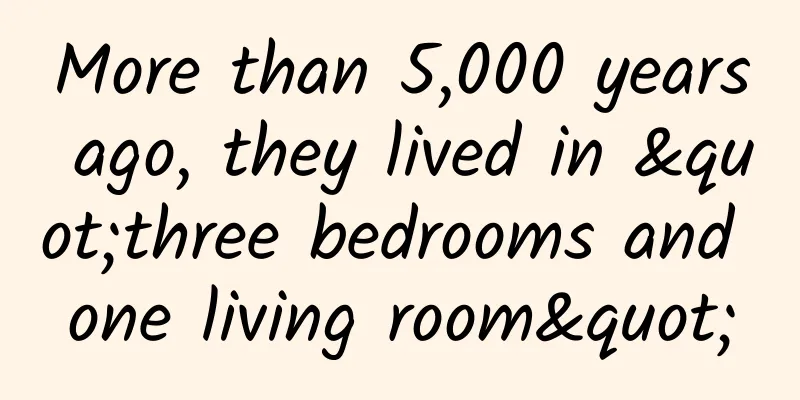A man was detained for killing the "sacred bird of the plateau". What is the significance of protecting black-necked cranes?

|
In December 2023, there was such a sad and infuriating news - the public security department of Meigu County, Liangshan, Sichuan received a report from the Institute of Black-necked Crane Migration Ecology, School of Ecology and Nature Conservation, Beijing Forestry University, stating that a black-necked crane with a tracker had been stationary in Meigu County for a long time and may have met with an accident, and requested an investigation. After a lot of visits, the forest police locked on the suspect Jike and interrogated him according to law. Jike confessed to his crime of illegally poaching and killing black-necked cranes. Later, the forest police found the remains of the black-necked crane in his home. At present, Jike has been detained, and he will be severely punished by law. Why does the abnormal death of a black-necked crane make us so sad? Because the black-necked crane is a national first-class protected wild animal, it is still a near-threatened species in the latest IUCN Red List of Threatened Species in 2020. There are currently 15 species of cranes in the world, and the black-necked crane is the only one that lives entirely on the plateau . Because of this, they became the last crane discovered in the world . The average height of the black-necked crane is about 150cm, which is considered a large crane. They look very similar to the red-crowned crane. When they grow up, their heads are also red, but the red skin is not as bright as the red-crowned crane, and there is no large area of white feathers behind the head like the red-crowned crane. The entire head and neck are almost black, which is the origin of the name of the black-necked crane. The feathers on their torso are not as white as the red-crowned crane, and the overall color is gray. Interestingly, more than a decade ago, there were many lead and zinc mines and smelters around Caohai in Guizhou. There was a lot of black dust in the air there, and the black-necked cranes living there were generally dark gray in color. In Zhaotong, Yunnan, there are two larger reservoirs, and the black-necked cranes living there often bathe, so their body feathers are white. Undoubtedly, the black-necked crane is as elegant as the red-crowned crane, with a graceful and melodious voice, so it is often praised as the "highland sacred bird". They are regarded as a symbol of good luck by the Tibetan people, often appearing in various folk legends and in many thangka "longevity pictures". Black-necked cranes live in plateau wetlands at an altitude of about 2500-5000m. In spring, they breed in the northeast of the Qinghai-Tibet Plateau. In autumn, they migrate to the southeast of the Qinghai-Tibet Plateau, the Yunnan-Guizhou Plateau, and the China-India and China-Pakistan borders to spend the winter. Their distribution area is actually very narrow, and it is like two semi-brackets with the distribution area of the red-crowned crane, which is far away in the west and east of my country. Like other cranes, black-necked cranes mainly feed on plant roots, leaves, fruits, fish, shrimp, small insects, and mollusks. However, the plateau climate is cold and survival is difficult . During the winter, they will run to the harvested farmland to look for the leftover barley, oats, and grass roots, and may even fly to the cattle to eat cow dung and parasites. At this time, they have to live close to humans, and therefore face a greater threat of poaching. The reproduction of black-necked cranes is even more difficult . They are monogamous birds, and a pair of birds usually only lay 1-2 eggs in a breeding season. There are often fights between the hatched cranes, and many babies die in the fights. The babies don’t have much time to grow up - they hatch in early June, and they must grow to the same height as their parents before October and learn to fly, because in early October, a large group of black-necked cranes will embark on a journey of migration to the south. If the young cranes left behind stay in the breeding grounds, they will only face the desperate situation of increasingly cold weather and less food, which can be said to be a dead end. It is precisely because the habitat area suitable for the survival of black-necked cranes in the plateau area is originally small, food is relatively scarce, the climate changes greatly, and there are often severe weather such as heavy snow and strong winds. These have brought huge challenges to the survival of black-necked cranes, resulting in their low birth rate and survival rate of young cranes, and slow population growth. The expansion of human activities has made the black-necked crane population even worse. Fish farming, dam construction, mining, digging "sea dams", agricultural reclamation and other activities have reduced the area of plateau wetlands. The black-necked cranes, which have lost their habitat, have to forage for crops in farmland, and are often hunted by farmers in retaliation. The wire fences used in some ranches often cause black-necked cranes to accidentally get stuck on them and die of starvation and cold. Some people even go to pick up crane eggs... In the 1980s, there were only about 200 black-necked cranes left in the world , which were in a critically endangered state. This attracted great attention from the country. After the introduction of the Wildlife Protection Law of the People's Republic of China, it was listed as a national first-class key protected wildlife. In order to protect the black-necked cranes, in addition to returning farmland to marshes and mining to marshes, farmers are also encouraged to leave some crops for the black-necked cranes as winter food. In addition, China has established 15 protected areas at all levels mainly for the protection of black-necked cranes, and carried out artificial breeding of black-necked cranes in 2002. After about 30 years of efforts, the number of black-necked cranes in the world is currently about 17,000, which is still not a safe number , and it can be seen that the growth rate is very slow. It can be said that every individual is very important to this species. We often say that we should protect endangered species, not just because a certain species is beautiful or cute, but the richer the species, the higher the biodiversity, and the more stable the ecosystem. Protecting and studying the black-necked crane as the flagship species of the plateau wetland ecosystem is of great significance to the protection of the local ecological balance. However, we still have a long way to go to truly restore the population of the "plateau sacred bird" to health and peace of mind. This article is a work supported by the Science Popularization China Creation Cultivation Program Author: Zhang Lv, a wildlife conservation worker Reviewer: Huang Chengming, Researcher, Institute of Zoology, Chinese Academy of Sciences Produced by: China Association for Science and Technology Department of Science Popularization Producer: China Science and Technology Press Co., Ltd., Beijing Zhongke Xinghe Culture Media Co., Ltd. |
<<: How can more than 700,000 “immovable” cultural relics resist the erosion of time?
>>: Can smelly car exhaust be made “cleaner”?
Recommend
Here are seven key points about APP message push
So, how to build a good APP message push mechanis...
4 most commonly used user segmentation methods!
Before writing today's notes, let's revie...
The privatization of the brands of Mixue Bingcheng and Yuanqi Forest!
According to the "2020 China Fast Moving Con...
A risk-free, zero-cost charlatan project that uses people's beliefs to make money
The word "shengun" has existed since an...
Challenges facing humanity: Increasingly invasive species
Produced by: Science Popularization China Produce...
App Store keyword algorithm adjustment: popularity increased, vocabulary expanded, and coverage increased!
Over the past weekend, we monitored that some cha...
14 tips to improve the conversion rate of advertising landing pages!
This article is a summary of the book "The B...
#千万IP创科普# Is the brown pheasant a horse? Is it a chicken? Can it be eaten?
Shanxi Natural History Museum has launched #全民IP创...
Euclid: Peering into dark matter 10 billion light years away
At the Lagrange L2 point (hereinafter referred to...
Become a powerful and outstanding full-stack designer!
When people talk about full-stack designers, it s...
Analysis of Estee Lauder’s Double 11 marketing strategy!
In the fiercely competitive beauty industry, majo...
How to deploy a huge amount of Qianchuan when cold starting a new account?
This article will explain what actions need to be...
Three typhoons "dance together", and typhoon red warnings continue to be issued!
Typhoon Saura, the ninth typhoon this year At aro...
After teasing 22 apps, Wandoujia launched a grand art marketing campaign...
As one of the earlier Android app stores to be la...
Sony makes money quietly by selling components to increase company profits
June 10: Tens of millions of consumers around the...









